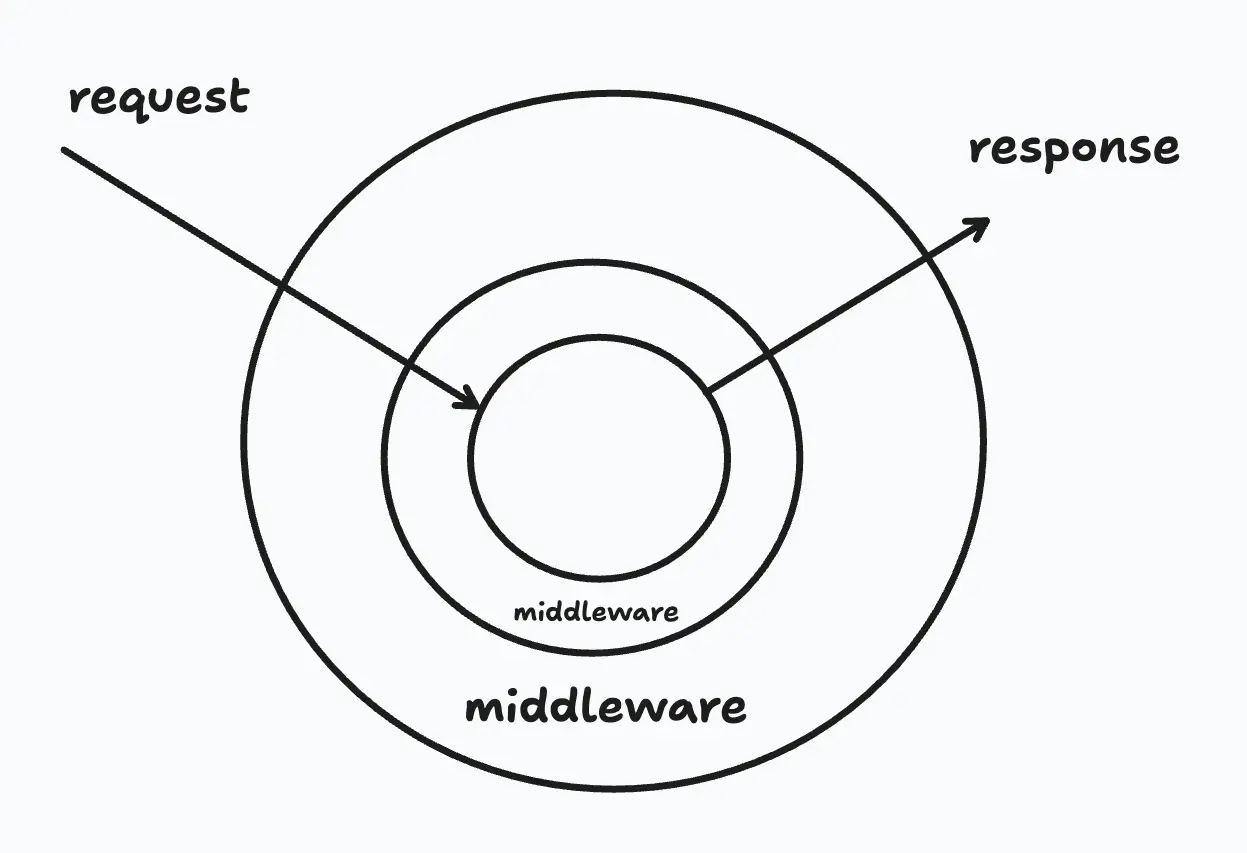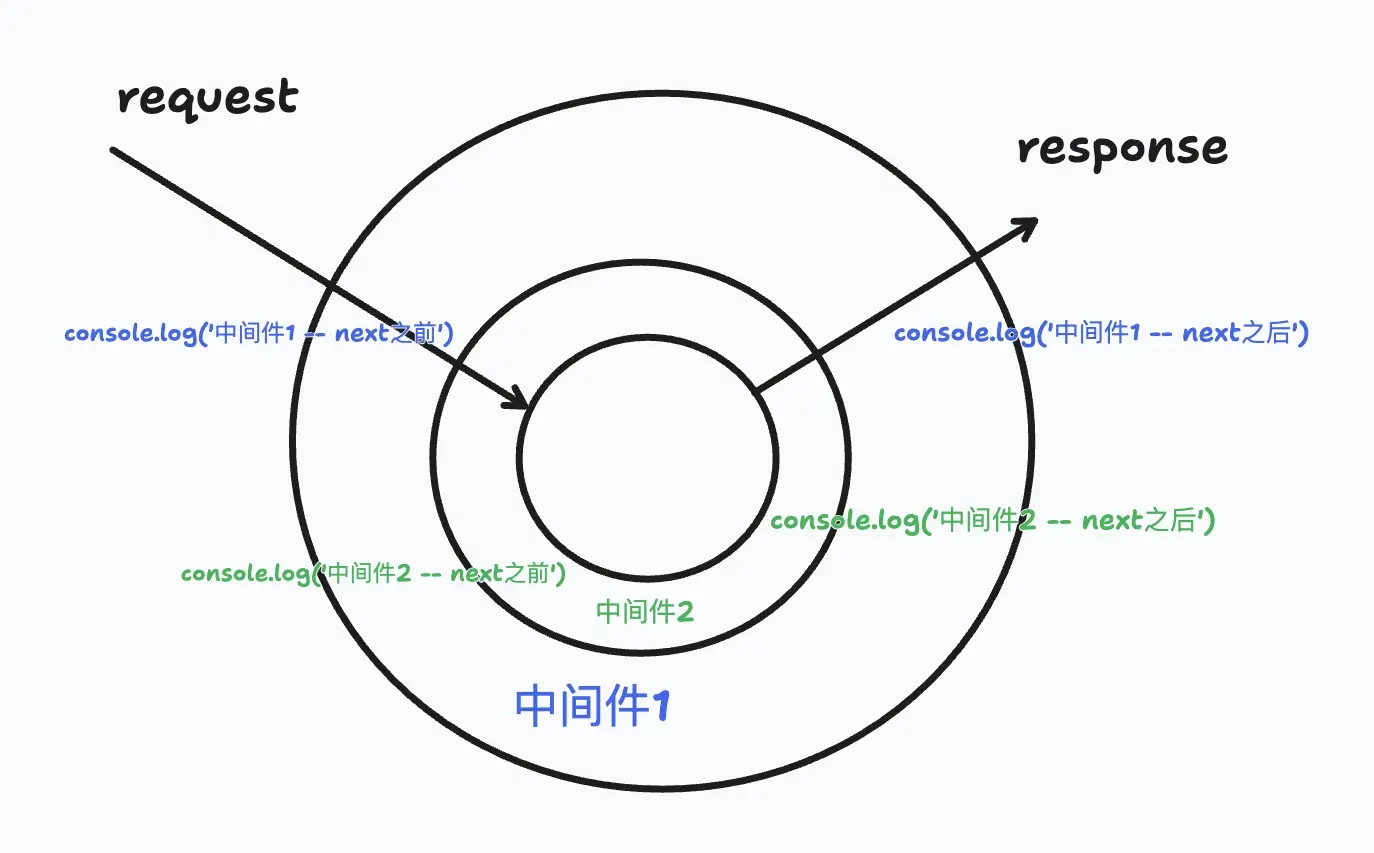就像我们睡觉一样,盖了三床被子,要从外面一层一层展开;躺进去后,再一层一层盖上一样。
koa 中的洋葱圈模型
在koa中,中间件是洋葱圈模型。什么是洋葱圈模型呢?

每一层都是一个中间件,先从外到里执行next前的处理,再由中心向外部执行next之后的处理。每一层都有两次执行时机。
我们先使用koa来看一下中间件执行的时机及过程
const Koa = require('koa')
const app = new Koa()
app.use((ctx, next) => {
console.log('中间件1 -- next之前')
next()
console.log('中间件1 -- next之后')
})
app.use((ctx, next) => {
console.log('中间件2 -- next之前')
next()
console.log('中间件2 -- next之后')
})
const port = 3000
app.listen(port, () => {
console.log(`http://localhost:${port}`)
})
执行如图所示

打印结果如下
中间件1 -- next之前 中间件2 -- next之前 中间件2 -- next之后 中间件1 -- next之后
简易的洋葱圈模型实现
const { createServer } = require("node:http")
class Koa {
handlers = []
ctx = {}
use(handler) {
if (typeof handler !== "function") {
throw new TypeError("middleware is must be a function")
}
this.handlers.push(handler)
}
_execute() {
if (this.handlers.length === 0)
return
const first = this.handlers.shift()
first(this.ctx, () => {
this._execute()
})
}
listen(port, callback) {
const app = createServer((req, res) => {
this._execute()
res.writeHead(200, { "Content-type": "application/json" })
res.end(
JSON.stringify({
status: 200,
message: "hello my koa",
})
)
})
app.listen(port, typeof callback === "function" ? callback : null)
}
}
const app = new Koa()
app.use((ctx, next) => {
console.log("中间件1 -- next之前")
next()
console.log("中间件1 -- next之后")
})
app.use((ctx, next) => {
console.log("中间件2 -- next之前")
next()
console.log("中间件2 -- next之后")
})
const port = 3000
app.listen(port, () => {
console.log(`http://localhost:${port}`)
})